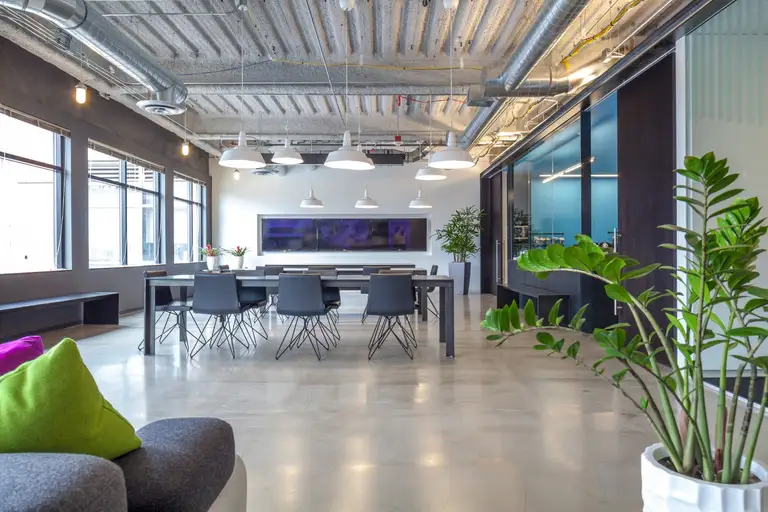However, there are also some potential drawbacks, such as decreased privacy and increased noise levels.
The open office concept has been in discussion for quite some time now, and has been implemented in many offices. People are now starting to debate more and more that it is hurting the productivity level of employees.
The main reason employees feel this way is because the open office concept makes it more difficult for people to actually concentrate during the work day.
What is the Open Office Concept? Where Did it all Start?
The open office concept is one that has been around for centuries, but it was popularized in the 1950s by German architect and theorist Frank Lloyd Wright. The idea is simple: instead of having many small, enclosed spaces, have one large, open space.
This allows for more natural light and air circulation, and it makes the space feel more open and welcoming. It also allows for more collaboration and interaction between employees, as there are no barriers to communication.
The open concept office was first implemented in the United States in the 1970s, and it quickly became popular in the corporate world. Many companies adopted the concept in an effort to boost productivity and creativity.
However, in recent years, there has been a backlash against the open office, as many people find it to be noisy and distracting.
Is Open-Plan Workspace Right for Your Business?
The open-plan office has been a staple of the American workplace for decades. But is it right for your business? There are pros and cons to consider before making the switch.
On the plus side, open-plan offices can promote collaboration and creativity. With everyone working in the same space, it’s easier to come up with ideas together and build on each other’s strengths.
There’s also cost savings that comes with open-plan offices. With fewer walls and doors, you’ll need less space, which can save on rent or building costs.
But there are downsides to open-plan offices, too. They can be noisy and distracting, which can make it hard to concentrate. And, because there’s less privacy, some employees may feel like they’re always under a microscope.

So, is the open office space concept right for your business? It depends. If you need to promote collaboration and creativity, it may be a good fit. But if you value privacy and a quiet atmosphere, you may want to stick with a more traditional setup.
Advantages and Disadvantages of an Open-Plan Workspace
Open-plan workspaces are becoming increasingly popular in today’s workplace. There are many advantages to having an open-plan workspace, including increased collaboration, better communication, and a more relaxed and informal atmosphere.
However, there are also some disadvantages to open-plan workspaces, including increased noise levels, distractions, and a lack of privacy.
The pros of an open-plan workspace:
- Increased collaboration – One of the main advantages of an open-plan workspace is that it encourages collaboration between employees. With everyone working in the same space, it’s easy for employees to ask each other for help or advice, or to simply have a quick chat. This can lead to a more productive and creative workplace.
- Better communication – The open office concept also promotes better communication between employees. With everyone in the same space, there are more opportunities for impromptu conversations and informal chats. This can help build better relationships between employees and can make the workplace more enjoyable.
- More relaxed and informal atmosphere – An open-plan workspace can also create a more relaxed and informal atmosphere. This can make the workplace more enjoyable and can help reduce stress levels.
- Improved natural light and ventilation – Open-plan workspaces often have better natural light and ventilation than traditional office spaces. This can improve employee health and well-being and can make the workplace more pleasant.
The cons of an open-plan workspace:
- Increased noise levels – One of the main disadvantages of an open-plan workspace is that it can lead to increased noise levels. With everyone in the same space, there is more opportunity for noise to travel, which can be distracting and can make it difficult to concentrate.
- Distractions – Open-plan workspaces can also be distracting. With so many people in the same space, it can be easy to get caught up in conversations or other activities, which can lead to decreased productivity.
- Lack of privacy – Another downside of an open-plan workspace is that it offers less privacy than a traditional office space. If you need to concentrate or if you need to make private phone calls, it can be difficult to find a place to do so.
- Health risks – Some research has suggested that open-plan workspaces can lead to increased levels of stress, anxiety, and fatigue. This is because of increased noise levels, distractions, and lack of privacy.
How to Improve Productivity in Open-Plan Workspace?
In an open-plan workspace, it can be difficult to stay focused and be productive. However, there are a few things you can do to help improve your productivity in this type of environment.
- First, try to find a quiet spot to work in. If possible, find a spot that is away from the main flow of traffic in the open-plan space. This will help you avoid distractions and instead focus on your work.
- Second, make sure you have all the supplies and materials you need before you start working. This way, you won’t have to stop in the middle of your work to look for something.
- Third, take breaks frequently. It’s important to step away from your work every once in a while, to clear your head. Taking a short walk or getting some fresh air can help you refuel and come back to your work with fresh energy.
- Lastly, try to stay organized. Having a tidy workspace will help you think more clearly and be more productive.
There are both pros and cons to an open-plan workspace. On the one hand, it can be more collaborative and allow for better communication.
On the other hand, it can be more distracting and make it difficult to focus. Ultimately, it depends on the individual and the company culture to decide whether an open-plan workspace is right for them.








